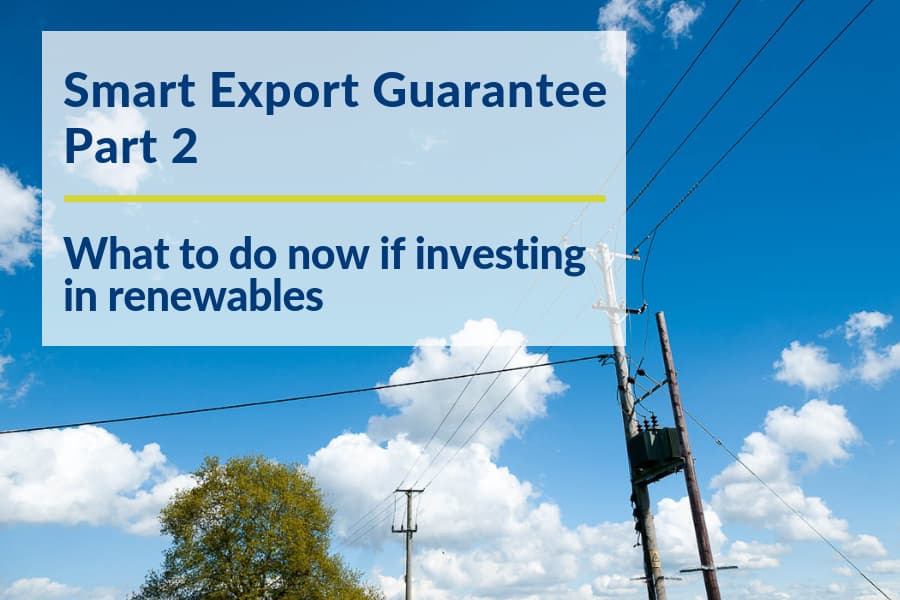Smart Export Guarantee – Part 2: What to do now if investing in renewables
Part 1 of my look at the Smart Export Guarantee explained how the new scheme is not much of a guarantee for investors in small-scale renewables schemes. While the FiT subsidy and export payments provided healthy index-linked investment returns from renewables, the SEG is less attractive.
Investors need to change their approach and mindset when considering renewables. The days of stacking as many solar panels on a roof as possible to benefit from the FiT are over. The site energy profile (demand and generation) and energy supply bill, including local grid availability and capacity, become the key areas of focus.
Unfortunately, we are seeing too many installers recommending unsuitably large schemes, which will never deliver decent returns and may potentially create significant losses. It’s important that site owners understand this, strategically review their site’s energy requirements and get professional advice to sensibly invest in a bespoke solution to fit their needs.
So what are the steps to take to ensure you invest wisely?
- Understand the business drivers for investment e.g. commercial returns, business resilience, carbon targets
- Analyse historic data from half-hourly metering or install half-hourly metering/monitoring to enable a thorough assessment of the electricity demand of your site
- Make sure that any energy generation from any existing renewables schemes is performing optimally
- Review the appropriateness of all existing assets including back-up diesel generation and consider any demand side response opportunities
- Procure electricity intelligently and cost-effectively and consider time of use tariffs such as STODs (seasonal time of day tariffs)
- Review and understand grid capacity on supply contracts and grid connection agreements with the local DNO (Distribution Network Operator)
- Only invest in a scheme if your demand on site makes investment attractive
- Initially consider multiple technology solutions, including an appraisal of all existing assets and heat demands, before choosing a specific strategy to mitigate cannibalisation of revenues and savings either today or in the future
- Size any scheme and technology (whether solar, wind, anaerobic digestion, battery storage or combined heat and power) to best fit your site demand. Any additional investment in panels or equipment surplus to your site demand is unlikely to deliver a good return on investment
- Model the cashflows and importantly consider tax from an early stage not least the potential risk and impact of business rates which can significantly impact on returns on investment
- Get any scheme proposal or quotation independently and professionally assessed to avoid being oversold on the size or being sold the wrong technology
- Consider installing low carbon generation to the same standards set by the SEG to ensure access to all markets are available (at this early stage, it is unclear how suppliers will structure their offerings for SEG compliant and non-compliant installations so it would be prudent that new schemes meet the SEG eligibility criteria).
Contact us
For help understanding how the Smart Export Guarantee will affect you, call us now on 01993 830571 or send us a message via our contact form.

